April 18th, 2015 ~ by admin
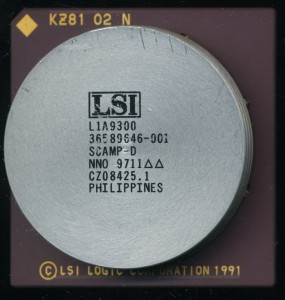
Unisys SCAMP-D – 1997 Made by LSI
Burroughs Corporation started in 1886, making it the oldest computation company still in existence. In September 1986, Burroughs merged with Sperry Corporation (of UNIVAC fame) to form Unisys which exists to this day. The story of the SCAMP though begins in 1961, with the introduction of the Burroughs B5000 mainframe. Burroughs was a bit late to the mainframe market, but entered it with a computer that was rather ahead of its time. The B5000 was a stack based design, and designed from the get go with the programmer in mind, it was designed with software implementation (namely the high level languages ALGOL and COBOL) in mind, rather then wrapping software around hardware design. This made it easy to program, and thus allowed Burroughs to take customer from IBM, who released the System/360 shortly thereafter.
In 1969 the B6500 was released, improving on the design and with it the MCP (Master Control Program). MCP was Burroughs operating system, and what came to define their machines for the decades to come. The B6000 line (like the B5000) was a 48-bit architecture. In addition to the 48-bit data size was a 3-bit tag that told the system what that data was, code, data, type, etc. This simplified the instruction set greatly as instruction need not be specific to each data type, they could check the tag and know what type of data. Coincidentally this also allowed for greater security as well, many of the buffer overflow exploits we have seen in the modern day were not possible on a Burroughs, the tag did not allow data to be executed as code, essentially it could perform as a NX flag (No Execute) such as is on modern x86 processors.
In 1984 the first A-series was released, as well as what would become ‘e-code’ a definition of the Burroughs instruction set that could be implemented in a variety of processors. Like the DEC VAX, Burroughs wanted to clearly define the instruction set, and leave the implementation of it up to the hardware designers. This helped ensure robust compatibility, and future proofing, ad is why MCP programs from the 70’s still can be ran today.
Read More »
April 12th, 2015 ~ by admin
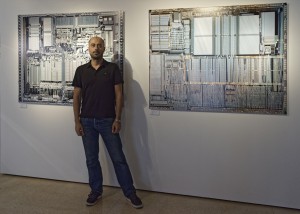
Christoph Morlinghaus in front of the very large prints of an Intel 486DX and Motorola 68030
I recently had the pleasure of helping noted photographer Christoph Morlinghaus with a die photo project. Christoph takes photos with a large format 8×10 film camera, and wanted to do some of processor dies, so the museum sent him off a box of chips. After a lot of work decapping and cleaning the chips, as well as finding ones with the most interesting dies, Christoph was able to take some stunning shots, no easy feat with the long exposure times required for such a camera. Exposure times for these shots can run into the minutes, and even something as minor as a truck driving by can create enough vibration to ruin the shot. Dies also had to be selected to show a variety of detail, colors, and be big enough to take a picture of, ideally a half inch on a side or better. You can view the results here on Morlinghaus.com. Some very large format prints are currently on display at the Snap! Gallery in Orlando Florida as well.
-
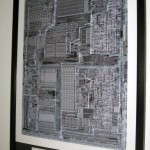
-
Intel i80186 – 1.5u – 55,000 Transistors – 1982
-
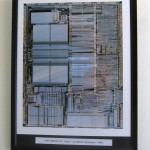
-
Intel i486 DX-33 – 1.0u – 1.2 Million Transistors – 1990
-
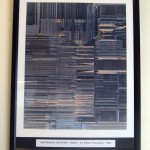
-
Intel Pentium 120 P54CS – 350nm – 3.3 Million Transistors – 1995
-
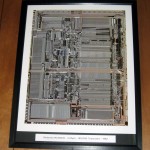
-
Motorola MC68020 – 2.25u – 190,000 Transistors – 1982
-
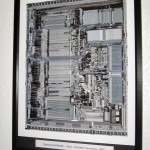
-
Motorola MC68030 – 1.0u – 273,000 Transistors – 1987
-
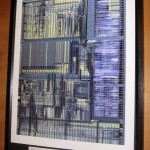
-
Cyrix MediaGX GXm-200GP – 350nm – 2.4 Million Transistors – 1997
-
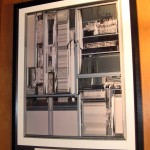
-
Cyrix Cx486DX2-V66GP – 650nm – 1.1 Million Transistors – 1994
Christoph did 7 total die shots of a variety of processors spanning 15 years of computing. Dies included are: Intel 186, 486 and Pentium (P54CS), Motorola MC68020 and MC68030 as well as a Cyrix Media GXm and Cx486DX2. A 17″x22″print of each was donated to the CPU Shack, which are now framed and hanging, where they make a very nice display, as well as truly artistic pieces.
April 9th, 2015 ~ by admin
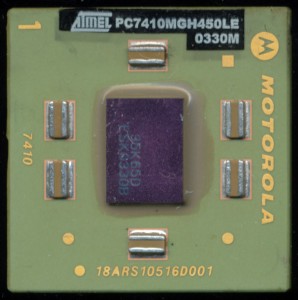
Atmel PC7410MGH450LE – Motorola Marked Package – 2003
In the 1970’s second sources were quite important in the processor industry. They provided a stable supply of a designed in part if the primary manufacturer (which often only had a fab or 2) had problems. They also could widen the market for the processor. Many of these agreements were kept active for decades after, resulting in some interesting results.
Motorola licensed many of their design to SGS, which later merged with Thomson to become STMicroelectronics. though the Thomson name was still used. Thomson license built most of Motorola’s product line, as well as many high reliability versions. In 1999 Atmel bought Thomson-CSF Semiconductors, and continued to make Motorola products (in their Grenoble France fab), which now included Motorola’s PowerPC line as well as the 68k line of processors. This portion of Atmel was sold to e2v (in England) in 2006, which continued to produce the Motorola (now spun off as Freescale) PowerPC line, now branded as e2V.
The packaging used by e2v (and previously Atmel) is the same as that used by Motorola/Freescale. The packages were custom made for Motorola/Freescale by Kyocera (and others) and so often chips with both Atmel/Motorola and e2v/Freescale markings can be found. It is this packaging that is of interest, as it shows an interesting aspect of processor design.
Read More »











